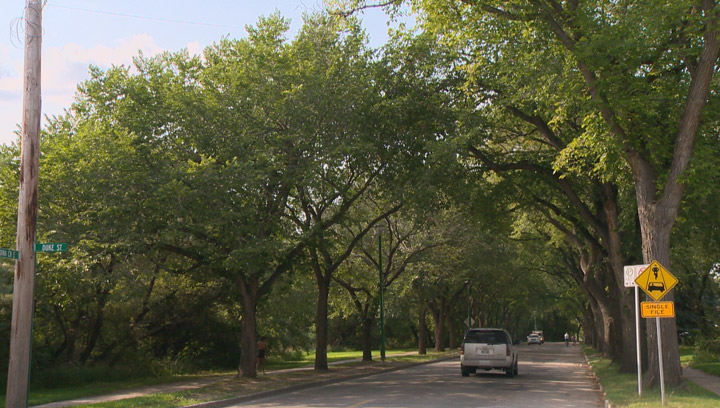Some troubling news for elm trees in Lethbridge as the Dutch elm disease (DED) or European elm scale has reached the city, despite many efforts to keep the fungus away.

According to the city, elm trees make up a large portion of the local urban forest, with nearly 6,000 public trees and an estimated 5,000 private trees.
Earlier this month, city staff observed symptoms of the fungus on two trees.
Samples of the trees were then taken to be tested and when the results came back positive, the trees were subsequently removed and disposed of safely.
City officials said this is the first recorded case in Alberta and British Columbia this year.
Elm trees on farms and other places in the country are susceptible to DED, the fungus can spread rapidly and destroy elm trees quickly. It can take out entire stands of elm and the fungus can be carried on the bodies of elm bark beetles.

Get daily National news
The city said there is no evidence as to how DED arrived in Lethbridge, although it is often introduced through fire wood or importing infected trees.
“Our urban forest is an extremely important part of our community,” said Dave Ellis, parks manager for the city of Lethbridge.“To protect it, we have been monitoring tree pests and insects for many years including elm bark beetles.
Ellis said none of the beetles the city has tested to date were carriers of the fungus that causes DED.
“The City of Lethbridge is now working with the Alberta Ministry of Agriculture and Forestry and the Canadian Food Inspection Agency to develop a response strategy in Lethbridge,” the city said in a press release on Thursday.
“Elm trees can be injected with a fungicide in the spring to treat DED and the city is exploring this option.
“The city is also working to map the elm trees and assess their condition. This will help determine how and if they can be treated.”
As elm trees in the public urban forest continue to be monitored, residents are being asked to:
- Determine if they have any elm trees on their property. If help with this is needed, you can contact an arborist
- Watch for signs of DED and report it to 311. This includes a sudden yellowing of the leaves, eventually causing the branch to wilt and leaves to turn brown.
- Refrain from pruning elm trees between April 1 and September 30
- Give the tree a good thorough watering before the fall frost to help it stay healthy through winter hibernation.
- Do not keep elm wood for personal use. It is illegal to do so. Stored elm wood is the ideal breeding environment for elm bark beetles.
The city says they have been an active member of the Society To Prevent Dutch Elm Disease (STOPDED) since it was first formed.
According to city staff, “STOPDED is a non-profit organization whose mandate is to preserve and protect Alberta’s elm trees from DED.”
DED does not affect tree species other than elm.
With files from Global News staff








Comments